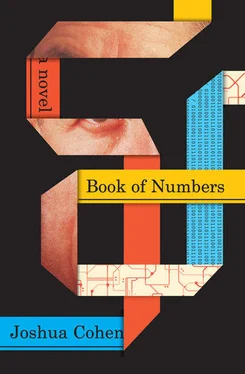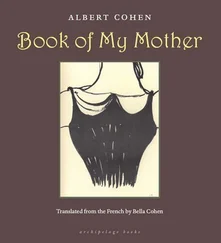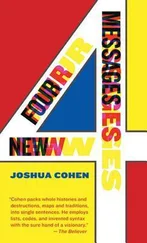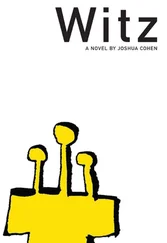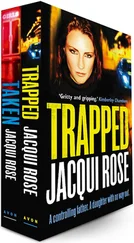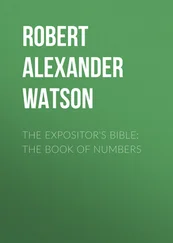Cohen’s most significant initial coding, however, appeared under the auspices of another letter — C. [SHITTY TRANSITION] That language— developed in the late 1960s and early 70s at AT&T Bell Labs—reprogrammed his life, involving him more deeply with the concept of the algorithm. [EXPLAIN ALGORITHMS] At the time C was best learned from a book, and books were best available in libraries. But the Harker School’s library also contained the only two computers it made available to students. It was there that Cohen could be found on most mornings, before school began, and on most evenings, after school ended, and, increasingly, skipping class, at all times between — waiting for a no show, or for a scheduled user to quit a session prematurely. According to school policy, each student could use a single computer for only an hour each per day. The slotting sheet was clipboarded at the edge of the circulation desk, and the librarianship behind the desk was responsible for enforcement. Cohen convinced the librarianship to let him automate the slotting, and they agreed, allowing him exclusive use of Computer 2 until the program was completed.
But Cohen stalled, complained, stalled and endured the complaints of his fellow students waiting, until the librarianship approached him offering condolences for his failure and gently requesting that he move aside and let other students take their turns, at which point Cohen unveiled a palindromer and an anagrammatizer — which rearranged the letters of any input, not semantically yet, but sequentially, a program he called “Insane Anglo Warlord,” an anagram of its dedicatee, “Ronald Wilson Reagan”—and finally, two different schedulers, one that would run on the librarianship’s computer, and was merely a database of times and student names, and the other a gameified version, which would run on the two student computers and allow users about to complete their sessions to compete for more time by answering a battery of SAT questions, with the user answering the most correctly in a two minute span declared the winner and awarded a session extension related to their score.
Cohen’s life beyond a computer terminal was minimal. He joined no athletics teams and only one extracurricular — The Tech-Mex Club [WHAT, IF ANYTHING, WAS MEXICAN ABOUT IT?] — which he dropped out of after one meeting. He chewed tinfoil once—“it tingled the tongue”—he did whippets once—“it was on TV”—both alone. He never smoked and throughout highschool was convinced that caffeine was alcoholic. He [WHEN?] shoplifted [WHERE?] topical benzoylperoxide acne treatments his mother had told him were cancerous. His father noticed the creams in his room and gave him empty toothpaste tubes to squeeze them into for storage. He read through the Achs (Asimov, Clarke, Heinlein), (Avram) Davidson, and avoided romantic attachments [EXPAND?].
Any other justification for leaving the house, besides school, had to be computer-related. He’d ride his bicycle two hours to rummage the dumpsters behind the Santa Clara Intel plant, riding back with a backpack of faulty chips he’d use to assemble computers that wouldn’t work [WHY NOT?], and then he’d upclock his own machine and participate in overheated rating wars in area diners [TO UPCLOCK IS TO RESET THE CYCLE, AND/OR TO MODIFY THE PIEZOELECTRIC CRYSTAL, OF A CPU’S CLOCK, SO THAT THE COMPUTER, NOW PROCESSING AT A SPEED NOT ENDORSED BY ITS MANUFACTURER, CAN FIGHT BATTLES ROYALE WITH OTHER COMPUTERS SIMULTANEOUSLY EXECUTING THE SAME MATH PROBLEM SET: THE VIRGIN WARRRIOR WHOSE OVERDRIVEN HOTROD SOLVED FASTEST OR JUST DIDN’T MELT DOWN GOT GLORY AND TAPIOCA PUDDING?].
In winter 1986, with Cohen a sophomore, Harker invested in a networked computer system of IBM ATs, and a program called N-rollment, which integrated student information and grades. Cohen, irate at having been banned from library computers for session abuse [EXPLAIN?], waited for the viceprincipal [NAME?] to leave her office, went in and inserted into her computer a diskette containing a program he’d coded, which instructed the computer to log the viceprincipal’s keystrokes. The next opportunity he had, he entered her office again, saved the strokelog to diskette. At home he managed to identify two strings, one of twelve characters, the other of eight, that, being “vpdernfurstl” and “hearken1,” didn’t seem to have any function in an administrative memo.
A week after the end of the quarter, the day after grades were due, Cohen skulked into school by explaining to a janitor he was a member of the jv beach kabaddi or innertube waterpolo team who hadn’t cleaned out his locker. He picked the lock on the library, whose main computer was patched into the network, hacked into N-rollment as vpdernfurstl, pword hearken1, registered his Social Studies and Language Arts teachers as students in their own classes, failed them and had reportcards sent to their home addresses.
Further, as Cohen had determined that viceprincipal? Dern-Furstl? used the same logname and pword for all of her access, he was also able to hack Paymate and have all the staff’s paychecks mailed to an erotic wares outlet in Redwood City.
Viceprincipal? Dern-Furstl? was contacted, and she contacted the PTA for recommendations on whom to consult on a sensitive computer issue in midsummer, was referred to Abs Cohen, who, just from the phonecall, had his suspicions [WOULDN’T SHE HAVE HAD THEM TOO, IF SHE’D BEEN APPRISED OF THE LIBRARY SCHEDULING STUNTS?]. Abs came into school, went through the viceprincipal’s computer, and found the strokelogger [WHICH HAD BEEN KEPT INSTALLED FOR FUTURE NEFARIOUSNESS?], recognized a few things in the rogue code that seemed familiar from mealtime conversations, and, without hesitation, fingered his son as the culprit.
Cohen was suspended, and threatened with expulsion, unless he developed a network security system. The school, essentially, gave him a job—“Harker prided itself on fostering creativity, they made us their IT guy for nothing.” Cohen set about synthesizing a number of security protocols already on the market, “but too sophisticated for any school, too expensive for even a WASPy private school to license.” His only truly original contribution he called Doublestroke, a 1987–88 keylogger logger, a program that could detect programs that kept track of keystrokes and, rather than purging them, shuttled them false clists, or character lists, that, if used to gain access to the network, gave access instead to a decoy in which the intruder could be studied.
Abs was so proud of Doublestroke that he tried to license it to Symantec, but Symantec became ambivalent after the patent provisional admitted that he wasn’t its author, rather his son was, a minor. Finally they outright refused after they received a letter from a lawyer claiming the trapware they’d been considering was the legitimate property of the Harker School. Cohen had boasted too much. Ultimately Doublestroke was sold, not licensed but sold, to Prev in 1988. The price was $8000. Split two ways, and less the lawyer’s commission.
://
from the Palo Alto sessions: We had so much anger back then, so much rage, which psychoanalysis might claim comes from our parents or from the parent of society, the crass materialism of the 80s assaulting through media that was matched in its destructive violence only by the counteroffensive of our domestic life. The strict discipline, the rules and regs. The bylaws. But our rebellion against them was not a slacking. We were much too young for the hippie thing and much too old for the punk thing. School had every demographic. Cliques were Bimbos, Himbos, Nerdlings, Geekers, Dorklords, Fagwads, and Whegroes but we complied with none of them. We were not even dweebazoids though we could have been if we had not been resistant, basically, to all category and class.
Читать дальше
